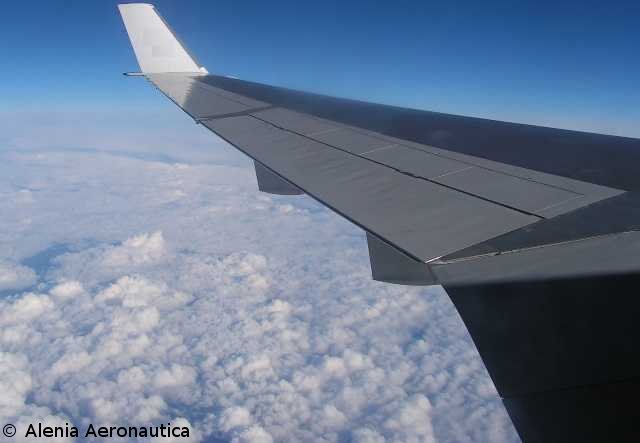
Alenia (IT)
Adaptive Wing
A change in the wing shape, obtained by the motion of control surface on the leading (slat) and trailing edge (flap), allows the wing designer to increase the lift and to reduce the stall speed which is needed for take off and landing. Leading edge and trailing edge actuation devices are installed to displace and rotate control surfaces in order to satisfy the aerodynamics requirements. A very interesting method requiring investigation is the possibility to introduce compliant elements instead of the classical actuation system of these aerodynamic surfaces. The flexibility inside the kinematic chain could reduce the actuation force and energy required for the motion. This means lighter actuators and smaller power units resulting in weight saving on the aircraft. The next step of investigation is the adaptive wing concept in which compliant mechanisms will show their full capability. In fact, incorporating shape morphing into wing structure, one can increase the flexibility and enhance the performance.

Landing Gear Retraction
The basic conventional elements to guide and structurally support a correct moving element such as landing gear are hinges and linkages. A very interesting way to investigate is the possibility to introduce compliance elements in the classical retraction system of the landing gear. The flexibility given by the compliance through the bistable mechanism could allow to reduce the actuation load needed and the energy required for the correct motion.
Click here for a movie of a landing gear retraction
Morphing Winglet
The winglet surface provides loads in a required direction, that compared to the upwards load of the wing generated during manoeuvres allows a decreasing of the static loads acting on the structures and actuators to maintain high aerodynamic performances and to alleviate main structure attachments. Wing bending loads (which are a negative effect of winglet installation) can be counteracted by changing the winglet profile camber and or bend. A compliant mechanism solution, actuated at the winglet root, can be studied for several winglet solutions and morphing requirements. If winglets are included on the horizontal surfaces or wings, the horizontal surfaces or wings must be designed for their maximum load in combination with loads induced by the winglets and moments or forces exerted on the horizontal surfaces or wings by the winglets.

Website maintained by the University of Cambridge
Last modified, May 2006